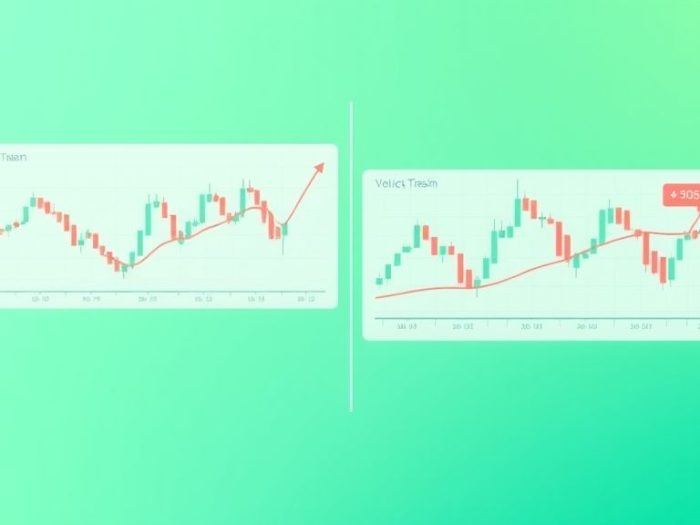Building a balanced portfolio is essential for managing risk and achieving
long-term investment success. Stock correlation, a statistical measure of how
stock prices move in relation to each other, plays a crucial role in this
process. This article explores the best stock correlation tools that can help
you construct a well-diversified and resilient portfolio.
Understanding Stock Correlation
Stock correlation is measured by the correlation coefficient, which ranges from
-1 to +1:
- +1: Perfect positive correlation (stocks move in the same direction).
- 0: No correlation (stocks move independently).
- -1: Perfect negative correlation (stocks move in opposite directions).
A balanced portfolio typically includes assets with low or negative
correlation to reduce overall volatility.
Why Use Stock Correlation Tools?
Stock correlation tools help investors:
- Diversify Effectively: Identify assets that can reduce portfolio risk.
- Manage Risk: Understand how different holdings might react during market fluctuations.
- Optimize Portfolio: Construct a portfolio with the desired risk and return profile.
Best Stock Correlation Tools
1. Portfolio Visualizer
Portfolio Visualizer is a free online tool that offers robust portfolio
analysis, including correlation analysis.
-
Key Features:
- Portfolio backtesting
- Asset allocation analysis
- Correlation matrix
- Efficient Frontier analysis
-
Strengths:
- User-friendly interface
- Comprehensive analysis tools
- Free access
-
Limitations:
- Data limitations for some assets.
2. Koyfin
Koyfin is a financial data platform that provides advanced charting and
analysis tools, including correlation analysis.
-
Key Features:
- Advanced charting
- Financial news and data
- Correlation matrix
- Economic data
-
Strengths:
- Modern interface
- Comprehensive financial data
-
Limitations:
- Free version has limitations.
3. YCharts
YCharts is a financial visualization and analysis platform that offers
powerful tools for examining stock relationships.
-
Key Features:
- Advanced charting
- Financial metrics
- Correlation analysis
- Economic indicators
-
Strengths:
- Excellent data visualization
- In-depth financial analysis
-
Limitations:
- Primarily a paid platform.
4. Google Sheets/Excel
Spreadsheet programs like Google Sheets and Excel can be used to calculate
stock correlation using built-in functions.
-
Key Features:
- CORREL function
- Customizable analysis
- Data import capabilities
-
Strengths:
- Free (for Google Sheets)
- Highly customizable
-
Limitations:
- Requires data input and manipulation.
- Less visual.
5. Python Libraries (e.g., NumPy, Pandas)
Python libraries like NumPy and Pandas provide powerful tools for
calculating and analyzing stock correlation.
-
Key Features:
- corr() function
- Advanced statistical analysis
- Data manipulation
-
Strengths:
- Highly flexible
- Suitable for complex analysis
-
Limitations:
- Requires programming skills.
Choosing the Right Tool
The best stock correlation tool depends on your:
- Analysis Needs: Basic portfolio analysis or advanced statistical modeling.
- Data Requirements: Access to real-time data or historical analysis.
- Technical Skills: Comfort with programming or spreadsheet software.
- Budget: Free or paid options.
Conclusion
Stock correlation tools are invaluable for building a balanced and resilient
portfolio. By carefully selecting the right tool for your needs, you can
effectively manage risk, optimize your asset allocation, and improve your
long-term investment outcomes.
Related Keywords
Stock correlation tools, portfolio correlation, asset correlation, portfolio
diversification, correlation analysis, portfolio optimization, investment risk
management, Portfolio Visualizer, Koyfin, YCharts.
Frequently Asked Questions (FAQ)
1. What is stock correlation?
Stock correlation is a statistical measure of how stock prices move in
relation to each other, measured by the correlation coefficient (ranging
from -1 to +1).
2. Why is stock correlation important for investors?
Understanding stock correlation helps investors diversify their
portfolios, manage risk, and optimize asset allocation.
3. What values represent different levels of stock correlation?
+1 represents perfect positive correlation (same direction), 0 represents
no correlation (independent movement), and -1 represents perfect
negative correlation (opposite directions).
4. What is Portfolio Visualizer?
Portfolio Visualizer is a free online tool that offers portfolio
backtesting, asset allocation analysis, and correlation analysis.
5. What are the strengths of Portfolio Visualizer?
Strengths include its user-friendly interface, comprehensive analysis
tools, and free access.
6. What is Koyfin?
Koyfin is a financial data platform that provides advanced charting and
analysis tools, including correlation analysis, financial news, and
economic data.
7. What are the strengths of Koyfin?
Strengths include its modern interface and comprehensive financial data.
8. How can Google Sheets or Excel be used for correlation analysis?
Google Sheets and Excel can calculate stock correlation using the
CORREL function, offering customizable analysis and data
import capabilities.
9. What are the advantages of using Python libraries for correlation analysis?
Python libraries like NumPy and Pandas provide highly flexible tools for
complex statistical analysis and data manipulation.
10. How do I choose the right stock correlation tool for me?
Consider your analysis needs, data requirements, technical skills, and
budget when choosing a stock correlation tool.



